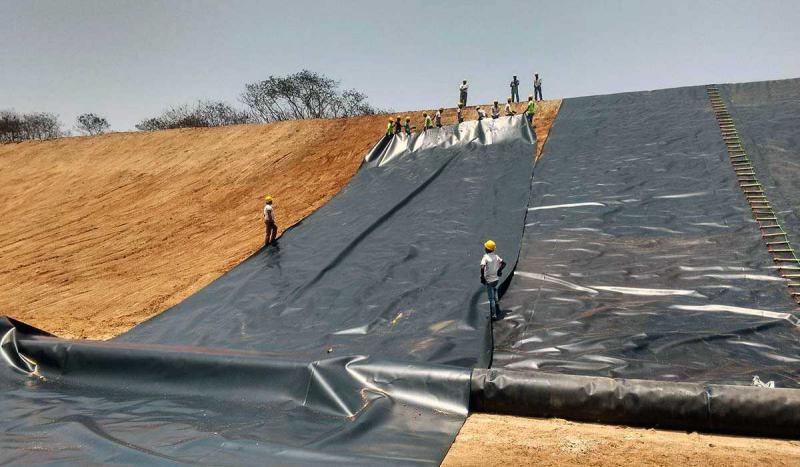Geomembranes are synthetic membrane liners used in construction for applications such as waste containment, water reservoirs, mining, and tunnels. Made from polymers such as high-density polyethylene (HDPE), polyvinyl chloride (PVC), ethyl vinyl acetate (EVA), and polypropylene (PP), geosynthetic provide an efficient barrier between stored liquids and underlying soil or rock.
Physical and Chemical Properties
The polymers used to manufacture geosynthetic are durable and resistant to chemicals, weathering and microbial degradation. HDPE geosynthetic are favored in applications requiring high strength and durability. These thick liners can withstand stresses from overburden pressures and earthworks equipment. PVC has good chemical resistance, flexibility in cold temperatures and longevity. EVA geosynthetic are flexible and tolerant to subsidence cracking. Polypropylene has strength and toughness while maintaining flexibility. Geosynthetic are manufactured to be non-porous, seamless and structurally sound.
Applications in Containment and Cover Systems
Geosynthetic are a key component in engineered cover systems for landfills, waste lagoons and other containment sites. Their low permeability prevents leachate migration into groundwater. Geosynthetic can also form the impermeable bottom layer in cut-off walls and slurry trenches installed around landfill perimeters. For tailings dams and rock piles in mining, geosynthetic serve as moisture barriers and strengthen unstable surfaces. Geosynthetic liners prevent seepage from holding ponds used in oilfield operations, stormwater runoff collection and food production wastewater lagoons.
Installation Challenges and Solutions
Proper subgrade preparation Geomembranes and geosynthetic placement are critical to achieving the required barrier performance. Roughened, uncompacted or sloped subgrades can develop stresses leading to punctures or tears over time. Anchor trenches and sand ballasting distribute forces across the liner surface. Heat-welded or chemical seams create a continuous membrane, as any holes render the entire barrier ineffective. Non-destructive testing locate flaws for repair before use. Rainfall runoff containment relies on quality seaming, as do mining operations handling acid rock drainage. Precise welding equipment and skilled labor ensure durable seams.
Longevity Considerations
Geomembranes are very resistant to environmental stresses but not impervious to degradation over decades. Exposure to UV radiation from sunlight and stresses from soil movement or overloading both impact service life. HDPE is usually specified for long-term containment as it retains strength longer than other polymers. Cover soils and turf layers protect against UV while conveying drainage away from the membrane below. Design against stresses includes anchoring, slope stability analysis and conservative load assumptions. Proactive inspection and repairs to wear points keep initial barriers functioning as intended for the entire design life of a project.
Standard Specifications and Certification Programs
Industry specifications from organizations like GRI and ASTM establish standard test methods for geosynthetic seam testing, chemical resistance, installation practices and durability properties. Manufacturers participate in third-party quality assurance programs to validate g geosynthetic performance claims. Certifications under schemes like the Geosynthetic Accreditation Institute Geosynthetic Material Certification Program (GAI-MACP) provide specifiers and regulators assurance that supplied geosynthetic meet requirements. This increases confidence that proper materials are installed to prevent failures over the long operational periods of projects. Standardization also helps construction quality control crews evaluate field seaming.
Get more insights on Geomembrane
